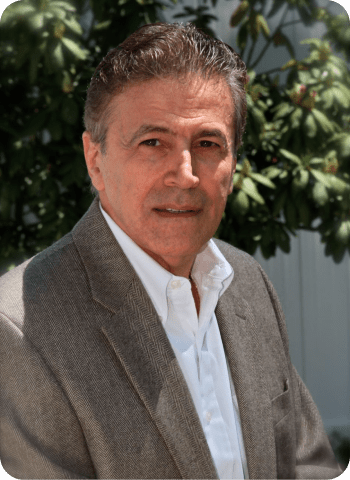
Brainspotting Therapy
“Where you look affects how you feel!”
“How Does it Work?”
By Dr. Mark Grixti
A sketch animation by Dr. Mark Grixti on how Brainspotting therapy works.
FOUNDER OF BRAINSPOTTING
Dr. Grand is a psychotherapist, writer, lecturer, performance coach and humanitarian famous for the discovery and development of the internationally acclaimed Brainspotting method, which brings about life-changing breakthroughs. Dr. Grand developed Brainspotting based on his observations of how eye positions and the visual field can impact the processing and resolution of traumatic experiences. Since its development, Brainspotting has gained recognition and popularity within the field of psychology, and it continues to be utilized by therapists worldwide as an effective therapeutic approach for trauma treatment and emotional healing.Dr. Grand’s expertise lies in understanding the brain-body connection and the role of neurobiology in healing. With decades of experience, he has trained thousands of therapists worldwide in Brainspotting and has conducted extensive research on its effectiveness. Dr. Grand’s work has had a profound impact on trauma treatment, providing therapists with a powerful tool to help clients heal and thrive. He continues to actively promote Brainspotting through workshops, training programs, and professional collaborations, further advancing the field of trauma therapy.
“What is a Brainspot?”
By Dr. David Grand
“Where we look affects how we feel.” - Dr. David Grand
Watch this short video to learn more.

Brainspotting can help with…
Brainspotting can be effective in treating a wide range of psychological and emotional issues.
While individual experiences may vary, Brainspotting has shown promise in addressing the following concerns:
TRAUMA
Brainspotting is particularly well-suited for trauma processing and healing by allowing individuals to process and release the emotional impact of various types of trauma. This includes single event traumas, developmental traumas, and career related experiences that are traumatic in nature.
ANXIETY AND PHOBIAS
Brainspotting can assist in alleviating anxiety disorders including phobias as it helps individuals identify and process the underlying fears and triggers that may be contributing to their anxiety.
DEPRESSION
Brainspotting can be beneficial for individuals experiencing depression as it works to release underlying emotional pain while promoting a sense of emotional resilience and empowerment.
ADDICTIONS AND SUBSTANCE ABUSE
Brainspotting can complement addiction treatment by addressing the underlying emotional issues and trauma that may contribute to addictive behaviours. It can aid in resolving cravings, reducing triggers, and supporting relapse prevention.
PERFORMANCE ANXIETY
Brainspotting can help individuals overcome performance anxiety as it assists in accessing and processing the underlying fears and self-limiting beliefs that hinder performance in various domains, such as sports, public speaking, artistic performances, or academic pursuits .
NEURODIVERSITY
Brainspotting works deep into the subcortex which interfaces with the central nervous system. Through this access point, the client can explore how their unique neurobiology is engaging the processes within as well as the influences of the world around them.
GRIEF AND LOSS
Brainspotting can support individuals in navigating the grieving process and healing from the emotional pain associated with loss.
PERSONAL RESILIENCE AND GROWTH
Brainspotting can promote personal resilience and growth by uncovering and processing self-limiting beliefs, past traumas, and emotional blocks.
STRESS MANAGEMENT
Brainspotting techniques can be effective in managing stress and promoting relaxation while enhancing healthy coping strategies.
Consulting with a certified Brainspotting therapist to determine if it is the appropriate approach for your specific needs and circumstances is a great first step.
What makes Brainspotting effective?
Brainspotting harnesses the brain’s innate healing abilities by engaging the connection between the visual field, eye positions, and the brain’s processing of emotional experiences.
KEY FACTORS:
Neurobiological Engagement: Brainspotting engages the brain’s limbic system, which is involved in emotional regulation and memory processing. By focusing attention on specific Brainspots, Brainspotting activates neural networks associated with unresolved trauma or emotional distress. This activation facilitates the release, reprocessing, and integration of emotional material at a neurobiological level, leading to emotional healing and resolution.
Accessing Unconscious Material: Brainspotting enables access to deeply held emotions, memories, and beliefs that may be stored in the subconscious or unconscious mind. By engaging specific eye positions, Brainspotting bypasses the limitations of verbal communication and allows individuals to connect with and process material that may be difficult to access through traditional talk therapy alone.
Nonverbal and Experiential Approach: Brainspotting acknowledges the importance of nonverbal and experiential processing in healing. By accessing emotions and sensations stored in the body, Brainspotting offers a holistic approach that complements traditional talk therapy. This approach can be particularly beneficial for individuals who struggle with expressing their emotions verbally.
Client Therapist Alliance and Empowerment: Brainspotting facilitates a supportive and nonjudgmental presence for the client which creates a safe space for exploration and processing, fostering trust and empowerment in the client’s healing journey. Therapeutic attunement is a a key element of Brainspotting.
Client-Centered Process: Brainspotting honours and promotes autonomy and self-discovery. This supports a client-led process, where the therapist follows the client’s inner experience and pace.
Training Opportunity
If you are a licensed/registered Mental Health Provider and are interested in training in Brainspotting Therapy please check out our training page!

